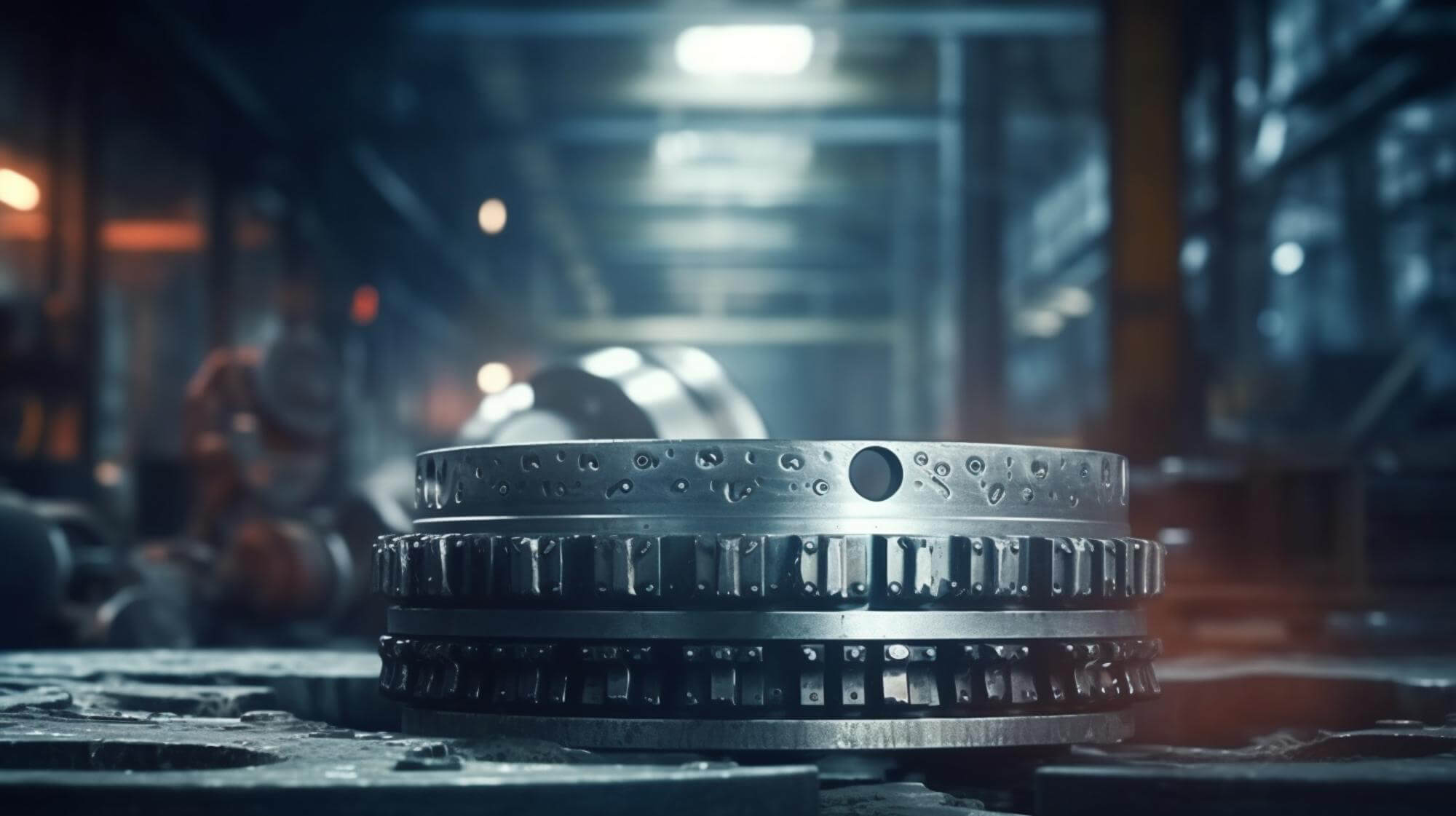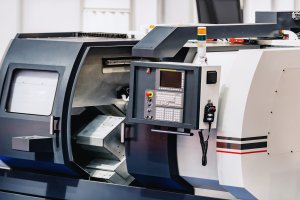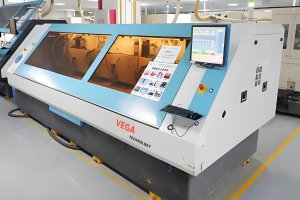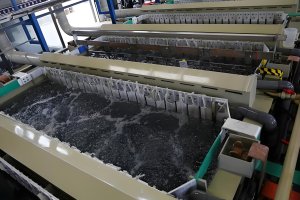The CNC machining of large-format parts presents unique challenges, particularly in industries like aerospace, where precision and reliability are paramount. These components, often spanning several meters in length and featuring complex geometries, are integral to the structural integrity of aircraft, spacecraft, and other high-performance machinery. However, the very size and complexity of these parts make them prone to deformation during and after machining, posing significant hurdles in achieving the required precision. This article explores the causes of deformation in large-format CNC machining, analyzes the impact of residual stresses, and discusses solutions to mitigate these issues, ensuring that the final parts meet the stringent standards expected in aerospace and other critical industries.
The Importance of Large-Format Parts in Aerospace and Other Industries
Large-format parts, such as structural frames, beams, and large joints, are critical in the aerospace industry due to their role in enhancing assembly accuracy, improving product quality, and reducing the risk of failure. These components often replace traditional assembly structures, offering superior mechanical performance and reducing manufacturing cycles. For instance, in aerospace applications, components like the integral frames, beams, and bulkheads of aircraft are typically made from large-format aluminum alloy workpieces.
These parts are characterized by their considerable dimensions, with lengths ranging from several meters to tens of meters and widths from several centimeters to a few meters. The production of such parts requires the removal of substantial material from the raw workpiece to achieve the desired lightweight structure. For example, in the case of a helicopter’s X3280 frame, the raw material initially weighs 550 kg, but after machining, the final part weighs just 10.1 kg—representing a material removal rate of approximately 98%. The significant material removal, combined with the thin walls and low rigidity of the finished part, makes these components highly susceptible to deformation.
Causes of Deformation in Large-Format CNC Machining
Deformation during the machining of large-format parts is a well-recognized challenge in CNC machining. Several factors contribute to this issue, including cutting forces, cutting heat, residual stresses generated during machining, and the initial residual stresses in the raw material. Understanding these causes is crucial for developing effective strategies to mitigate deformation.
- Cutting Forces: During machining, the forces exerted by the cutting tool can cause the part to deform, particularly in areas where the material is thin and less rigid. The elastic deformation induced by cutting forces can result in dimensional errors once the cutting forces are removed.
- Cutting Heat: The heat generated during the cutting process can cause thermal expansion in the workpiece. As the material heats and cools, it can lead to warping or distortion, especially in large parts with varying cross-sectional thicknesses.
- Residual Stresses from Machining: Residual stresses are introduced into the material during the cutting process due to the uneven distribution of cutting forces and heat. These stresses can cause the material to warp or distort after machining, particularly when the part is released from its fixtures.
- Initial Residual Stresses in Raw Material: Even before machining begins, the raw material may contain residual stresses from previous manufacturing processes such as forging, rolling, or heat treatment. As material is removed during machining, these stresses are released unevenly, leading to deformation.
Data Table: Factors Contributing to Deformation in Large-Format CNC Machining
| Factor | Description | Impact on Deformation |
|---|---|---|
| Cutting Forces | Forces exerted by the cutting tool during machining | Causes elastic deformation and dimensional errors |
| Cutting Heat | Heat generated by cutting, leading to thermal expansion | Causes warping and distortion due to uneven cooling |
| Residual Stresses from Machining | Stresses introduced by uneven cutting forces and heat distribution | Leads to warping or distortion post-machining |
| Initial Residual Stresses in Material | Stresses present in raw material due to prior processes (forging, rolling) | Causes deformation as stresses are released unevenly |
The Role of Finite Element Analysis (FEA) in Deformation Prediction
Finite Element Analysis (FEA) is a critical tool in predicting and mitigating deformation during the CNC machining of large-format parts. FEA allows engineers to simulate the machining process and analyze how residual stresses and cutting forces will affect the final part. This simulation can be particularly useful in identifying potential issues before actual machining begins, enabling adjustments in the machining strategy to minimize deformation.
2D vs. 3D Cutting Simulations
While 2D cutting simulations have been widely used and offer valuable insights, they are limited in their ability to fully represent the complexities of real-world machining, especially for large-format parts with intricate geometries. 3D cutting simulations, although more computationally intensive, provide a more accurate representation of the machining process, allowing for a more detailed analysis of deformation risks.
In the aerospace industry, where precision is critical, the use of 3D FEA has become increasingly important. This technology enables the simulation of the entire machining process, including the effects of cutting forces, heat generation, and residual stress distribution. By comparing the simulation results with actual machining data, engineers can fine-tune their processes to reduce deformation and improve part accuracy.
Data Table: Comparison of 2D and 3D FEA in Machining Simulations
| Simulation Type | Accuracy in Predicting Deformation | Computational Requirements | Application in Large-Format Parts Machining |
|---|---|---|---|
| 2D FEA | Moderate | Lower | Limited to simpler geometries |
| 3D FEA | High | Higher | Essential for complex, large-format parts |
Solutions to Mitigate Deformation in Large-Format CNC Machining
Mitigating deformation in large-format CNC machining requires a combination of strategies, including optimizing the machining process, controlling cutting parameters, and managing residual stresses. Here are some practical solutions:
- Process Optimization:
- Layered Machining: Large-format parts are often machined in layers to gradually remove material and reduce the stress on the part. This approach minimizes the risk of deformation by allowing for more controlled material removal.
- Balanced Material Removal: Symmetrical material removal on both sides of the part helps maintain balance and reduce the likelihood of warping.
- Cutting Parameter Control:
- Cutting Speed and Feed Rate: Optimizing cutting speed and feed rate can reduce the heat generated during machining and minimize thermal expansion.
- Tool Path Strategy: Implementing an optimized tool path that distributes cutting forces evenly can prevent localized stress concentration and reduce deformation.
- Residual Stress Management:
- Pre-Stretching and Heat Treatment: Pre-stretching aluminum alloy plates before machining and applying heat treatment can reduce residual stresses in the material, lowering the risk of deformation.
- Vibration Stress Relief: Applying vibration during machining can help redistribute and relieve residual stresses, reducing the potential for deformation.
- Advanced Cooling Techniques:
- High-Flow Coolants: Using high-flow coolants or cryogenic cooling can effectively manage the heat generated during machining, preventing thermal deformation.
- MQL (Minimum Quantity Lubrication): MQL systems deliver a fine mist of coolant directly to the cutting zone, reducing heat without the need for excessive coolant.
- Workholding and Fixturing:
- Flexible Fixturing: Using fixtures that allow for some movement can accommodate the material’s natural tendency to expand or contract during machining, reducing the risk of deformation.
- Vacuum Clamping: For thin-walled parts, vacuum clamping can provide uniform support across the entire surface, minimizing distortion.
Data Table: Strategies to Mitigate Deformation in CNC Machining
| Strategy | Description | Benefits for Large-Format Parts |
|---|---|---|
| Layered Machining | Gradual material removal in layers | Reduces stress and deformation risk |
| Balanced Material Removal | Symmetrical removal on both sides of the part | Maintains balance and minimizes warping |
| Pre-Stretching and Heat Treatment | Reduces residual stresses in the raw material before machining | Lowers deformation potential |
| High-Flow Coolants and Cryogenic Cooling | Effective heat management during machining | Prevents thermal expansion and distortion |
| Flexible Fixturing and Vacuum Clamping | Provides support and allows natural material movement | Reduces the likelihood of deformation |
Case Study: Deformation Control in Aerospace Structural Frames
To illustrate the practical application of these strategies, consider the machining of an integral structural frame for an aircraft. The raw material, a large aluminum alloy plate, undergoes CNC machining to create a complex frame structure. Given the size and precision requirements, the following steps were taken to control deformation:
- Initial Material Preparation: The aluminum plate was pre-stretched and heat-treated to reduce initial residual stresses.
- Process Planning: A layered machining strategy was employed, with symmetrical material removal on both sides of the part to maintain balance.
- Cutting Parameter Optimization: Cutting speed and feed rate were carefully controlled, and high-flow coolant was used to manage heat generation.
- Fixturing: The part was secured using vacuum clamping to ensure uniform support and minimize distortion.
- FEA Simulation: Prior to machining, a 3D FEA simulation was conducted to predict potential deformation and adjust the machining strategy accordingly.
The result was a high-precision structural frame with minimal deformation, meeting the stringent requirements for aerospace applications.
Conclusion
The machining of large-format parts in industries such as aerospace requires careful consideration of deformation challenges. By understanding the causes of deformation and employing advanced techniques such as FEA, optimized machining processes, and effective residual stress management, manufacturers can achieve the high precision necessary for these critical components. As the demand for large, complex parts continues to grow, the ability to control deformation during CNC machining will remain a key factor in ensuring the quality and performance of the final product.
Other Articles You Might Enjoy
- Requirements for CNC Machining Parts
Preparation Work Complete the necessary preparation before machining, including process analysis, process route design, tool and fixture selection, and program compilation. online cnc machining service Operating Steps and Contents Start…
- The main factors of workpiece deformation in CNC machining
With the rapid development of science and technology, many fields have already reached a near-saturated state. The market competition in the field of CNC machining is becoming more and more…
- Face Milling Essentials for CNC Machining Parts
Face milling is an essential operation in CNC machining, aimed at controlling the height of the workpiece and ensuring a smooth surface finish. This process often uses multi-tooth cutters, known…
- What are the requirements for CNC machining of bearing parts?
Bearings are common and important parts in the automotive industry, which can support transmission components and transmit torque. Generally, CNC machining centers are used to process bearing parts. So what…
- Evolution of Mills and Machining Centers: The Future of CNC Machining Parts
Stepping into the world of CNC machining, you quickly realize how pivotal mills and machining centers are in crafting precise parts. Over time, these machines have evolved significantly, transforming from…
- Precision CNC Machining of Steel: High-Volume Production
Precision CNC Machining and High-Volume Production As an integral part of modern manufacturing processes, Precision Computer Numerical Control (CNC) machining brings about unmatched accuracy and consistency in the production of…






